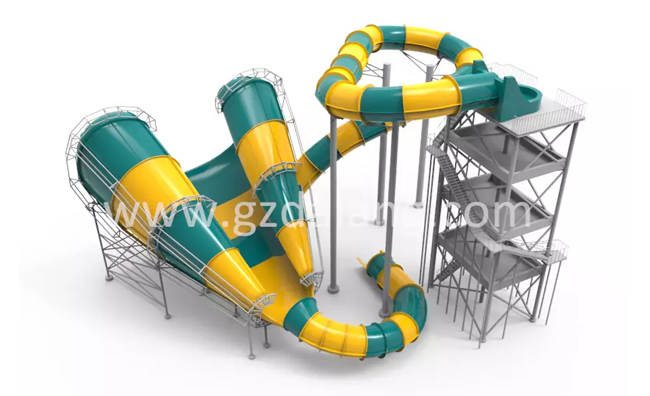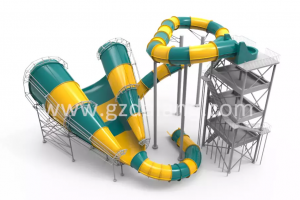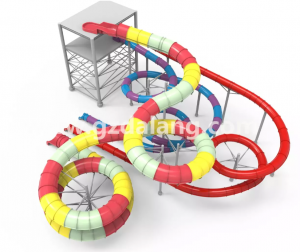Starting a water park business can be an exciting and lucrative venture, given the growing demand for recreational activities and family-friendly entertainment. However, it is also a large-scale investment that requires careful planning, a significant capital outlay, and a deep understanding of the industry. Here’s a comprehensive guide to help you navigate the process of starting a successful water park business:
1. Conduct Market Research and Feasibility Study
Before jumping into the water park business, it’s essential to understand the market and the feasibility of your venture. This includes assessing the demand for a water park in your area, identifying your target audience, and determining the potential profitability.
Steps to Take:
Identify Location: Conduct a thorough analysis of potential locations. A location with high foot traffic, good access to transportation, and proximity to residential areas can attract more visitors.
Evaluate Competition: Investigate existing water parks in the area to assess the level of competition. This will help you identify any gaps in the market, or if the market is already saturated.
Assess Demographics: Understand your target market—whether it’s families with children, teenagers, or adults looking for water sports. Tailoring your offerings to the preferences of these groups will ensure your success.
Profitability: Perform a detailed feasibility study to determine the costs of land, construction, staff, maintenance, and other expenses versus the potential revenue from ticket sales, food and beverage sales, merchandise, and special events.
2. Create a Business Plan
A business plan is crucial for any new business. It acts as a blueprint for your water park and helps guide decisions related to financing, marketing, and operations. A well-prepared business plan will also help attract investors or secure loans if needed.
Key Elements of a Water Park Business Plan:
Executive Summary: A brief overview of the business concept, mission, and objectives.
Market Analysis: Data and insights about the target market, industry trends, competitors, and potential customers.
Design and Attractions: Detail the types of rides, pools, and amenities you plan to offer. Will you have water slides, lazy rivers, wave pools, or water play areas for kids?
Financial Plan: Outline the startup costs, funding requirements, revenue projections, and potential profits. This should include estimates for construction, equipment, permits, insurance, and operational costs.
Marketing Strategy: Plan for how you will attract customers, including pricing strategies, promotions, advertising, and partnerships with local hotels or tour operators.
3. Secure Funding
Starting a water park can be capital-intensive. The cost of land, construction, water features, equipment, staff, and operations can add up quickly. It is important to assess your financing options:
Options to Explore:
Personal Savings: If you have the necessary capital, you could fund the project yourself.
Bank Loans: Traditional loans can help cover startup costs, though this will require a solid business plan and financial projections.
Investors: You could seek investors who are willing to fund the project in exchange for equity or a share of the profits.
Partnerships: Partnering with other investors or businesses, such as hospitality or real estate companies, may help secure additional capital.
Government Grants or Loans: Some local governments offer financial assistance or incentives for businesses that create jobs or promote tourism.
Family Tunnel Slide Water Park
4. Obtain Permits and Licenses
Building and operating a water park involves compliance with various regulations, health and safety standards, and zoning laws. You’ll need to apply for several permits before construction begins.
Common Permits and Licenses:
Construction Permits: To begin building the park, you’ll need approval from local authorities regarding zoning, land use, and environmental impact.
Health and Safety Certifications: Water parks must adhere to strict health and safety standards. You’ll need to ensure compliance with water sanitation and safety protocols to protect guests.
Environmental Approvals: Depending on your location, you may need environmental assessments to ensure that your park does not negatively impact the surrounding ecosystem.
Business License: A general business license is required to legally operate a business in most jurisdictions.
Insurance: Comprehensive insurance for liability, property damage, workers’ compensation, and emergency situations is essential.
5. Choose the Right Land and Design Your Water Park
The location and design of your water park are critical factors that determine its success. Consider the following elements when planning your park:
Land Requirements:
Size: A typical water park requires a substantial amount of land, typically several acres. You’ll need enough space for water rides, attractions, parking, and possibly restaurants and stores.
Accessibility: Ensure the site is easily accessible by road and public transport and that there is enough parking space for visitors.
Landscaping: Proper landscaping will help create a welcoming and enjoyable environment for guests.
Design Considerations:
Attractions: Focus on creating a mix of attractions to appeal to all age groups—thrilling water slides, relaxing wave pools, lazy rivers, splash zones for kids, and even water sports areas.
Safety: Safety should be a priority in your design. Include lifeguard stations, emergency exits, clear signage, and well-maintained equipment.
Aesthetic Appeal: Create an attractive and fun environment with appealing designs, theme-based areas, and tropical landscaping.
Visitor Experience: Consider additional amenities like food courts, lounges, changing rooms, first-aid stations, and lockers.
6. Build Your Water Park
Once the design is in place and funding is secured, you can move forward with construction. Partnering with experienced construction and engineering firms that specialize in water parks can help streamline the process. The construction phase typically involves:
Land Preparation: Clearing, leveling, and preparing the land for rides, pools, and other facilities.
Building Infrastructure: Constructing water rides, pools, water filtration systems, and other park structures.
Setting Up Utilities: Installing necessary plumbing, electricity, and water systems to ensure smooth operations.
Staff Training: Hire and train staff, including lifeguards, maintenance workers, customer service staff, and management.
7. Marketing and Promotion
Once your water park is built, effective marketing will be essential to attract visitors and generate revenue. Here’s how you can promote your park:
Marketing Strategies:
Grand Opening Event: Organize a grand opening to draw in visitors. This could include special promotions, discounts, or celebrity appearances.
Local Partnerships: Partner with nearby hotels, travel agencies, and tour operators to offer package deals.
Social Media Marketing: Use platforms like Instagram, Facebook, and TikTok to showcase exciting moments, behind-the-scenes footage, and promotional offers. User-generated content can help build buzz.
Traditional Advertising: Consider local TV, radio, and print ads, especially during peak tourist seasons.
Season Passes and Discounts: Offer season passes to encourage repeat visitors and group discounts for families or large parties.
8. Operations and Maintenance
Running a water park requires ongoing operations and maintenance to ensure smooth day-to-day operations and safety. Focus on:
Staffing: Hire skilled staff, including lifeguards, operations managers, customer service reps, and maintenance workers.
Safety Protocols: Constantly monitor water quality, safety measures, and the maintenance of rides.
Seasonal Operations: Many water parks are seasonal, so plan for off-season maintenance, repairs, and promotional efforts to attract off-season guests (such as through winter festivals or special indoor events).
9. Expand and Innovate
As your water park grows and attracts customers, consider expanding and introducing new features to maintain interest. This could include:
New rides or attractions.
Themed events (such as water-based concerts, festivals, or competitions).
Enhancing customer service with premium options, like VIP experiences or exclusive areas.
Conclusion
Starting a water park is an exciting business opportunity, but it requires significant planning, investment, and ongoing management. Conducting thorough market research, developing a solid business plan, obtaining necessary permits, and focusing on safety and customer experience are key to the success of your water park. With proper execution, a well-designed water park can provide an enjoyable experience for guests while generating strong revenue over time.







